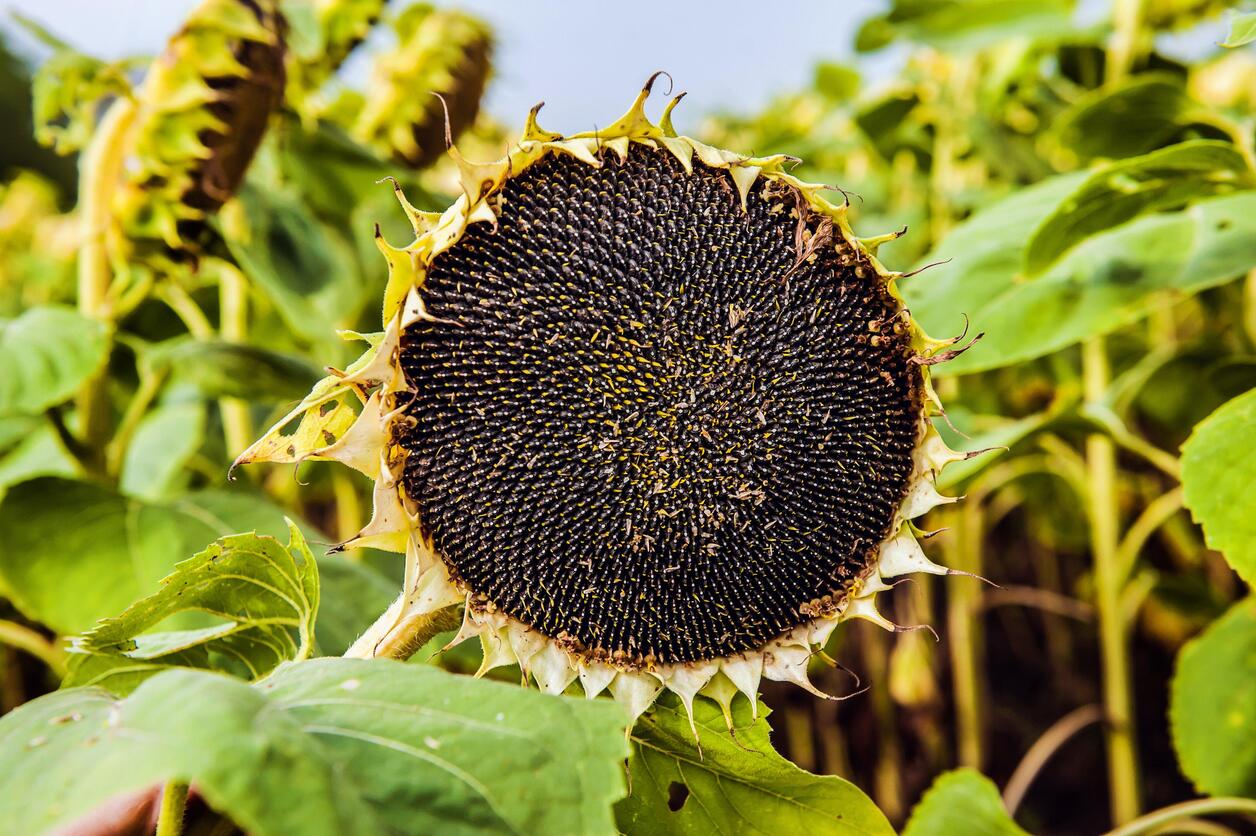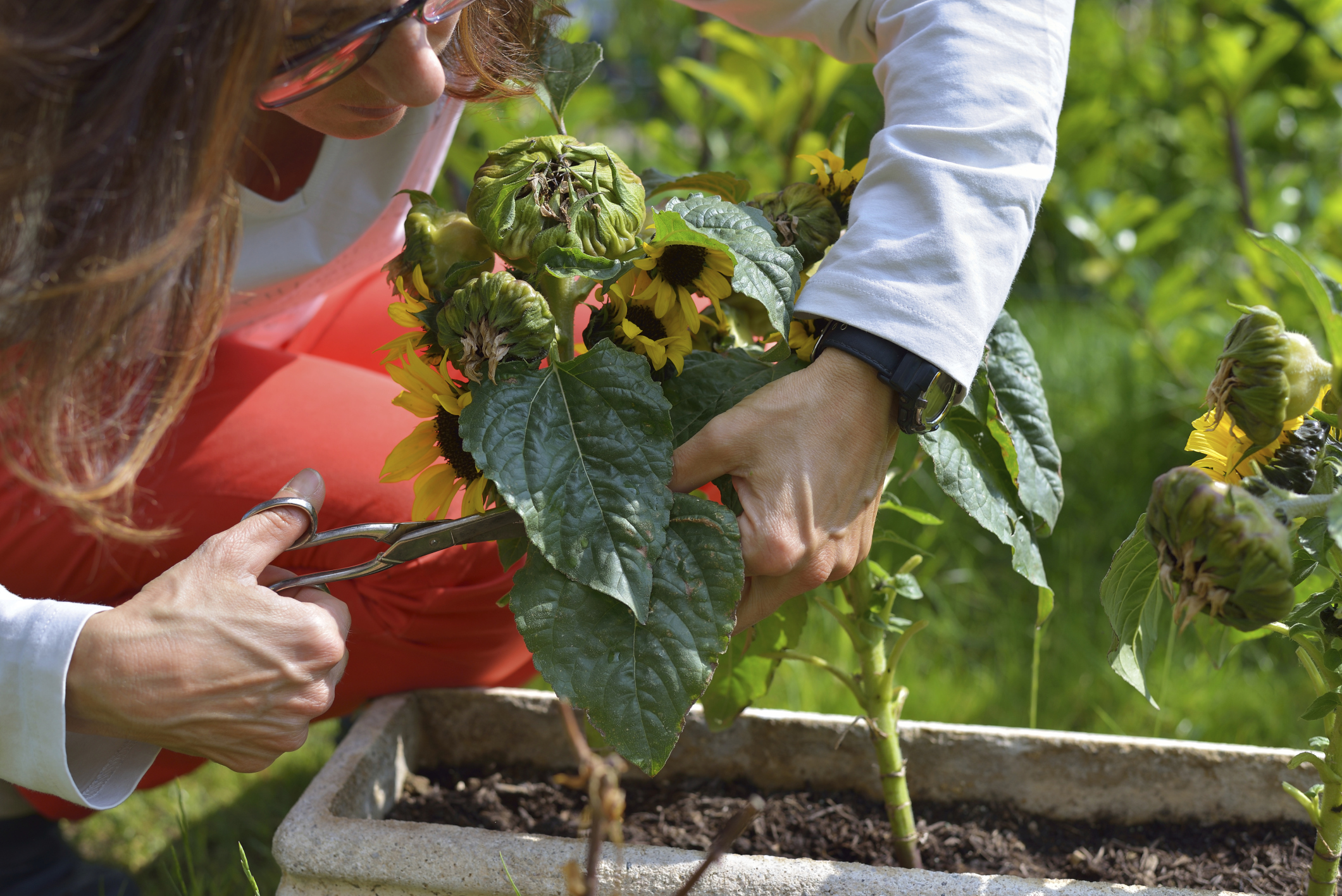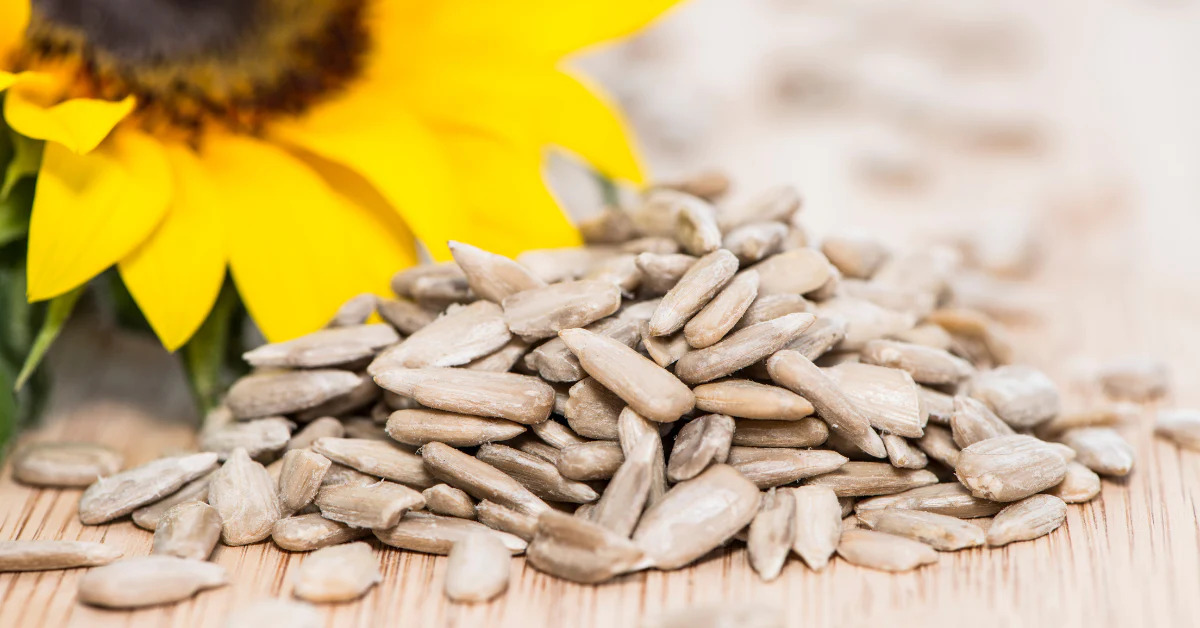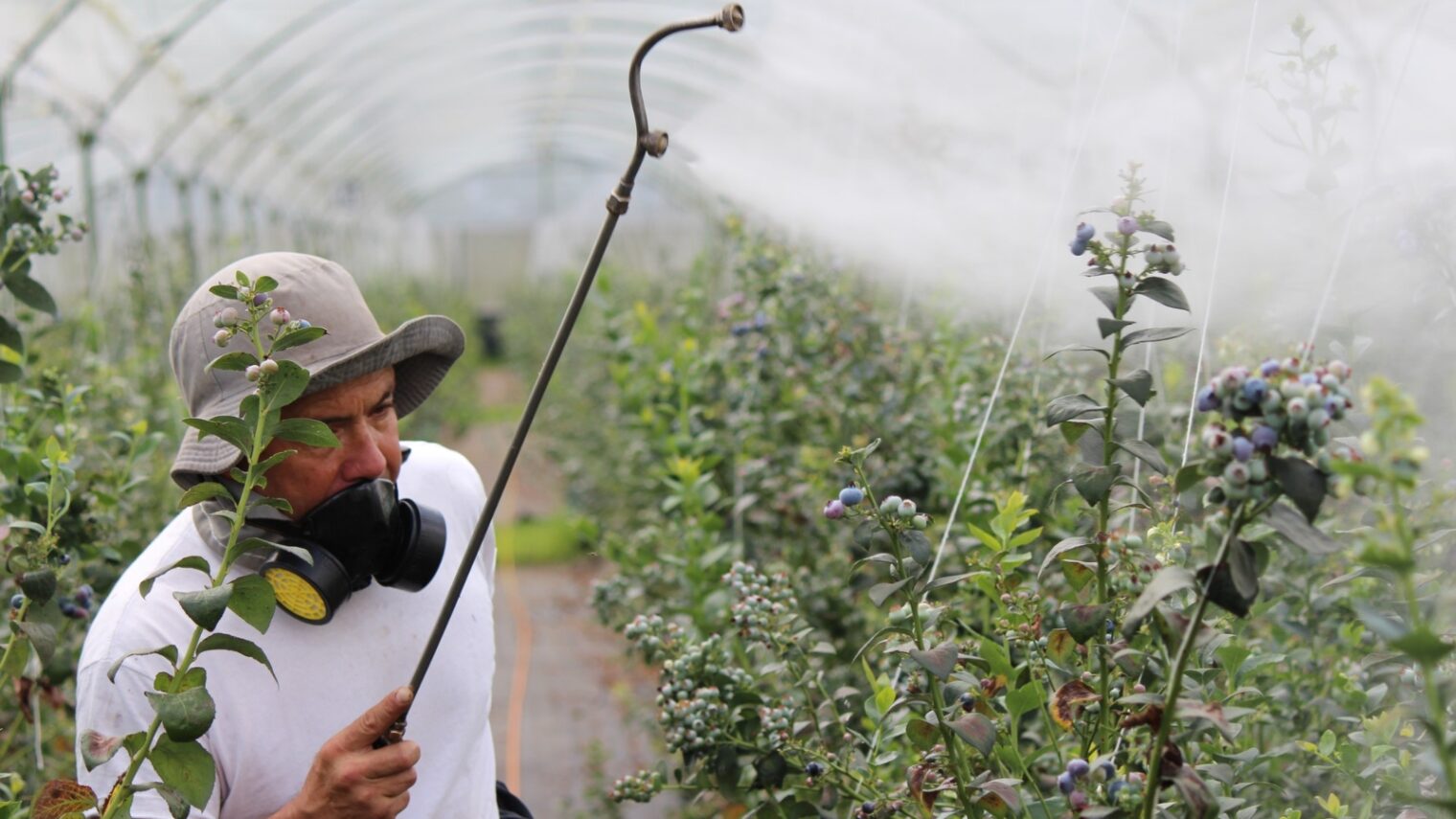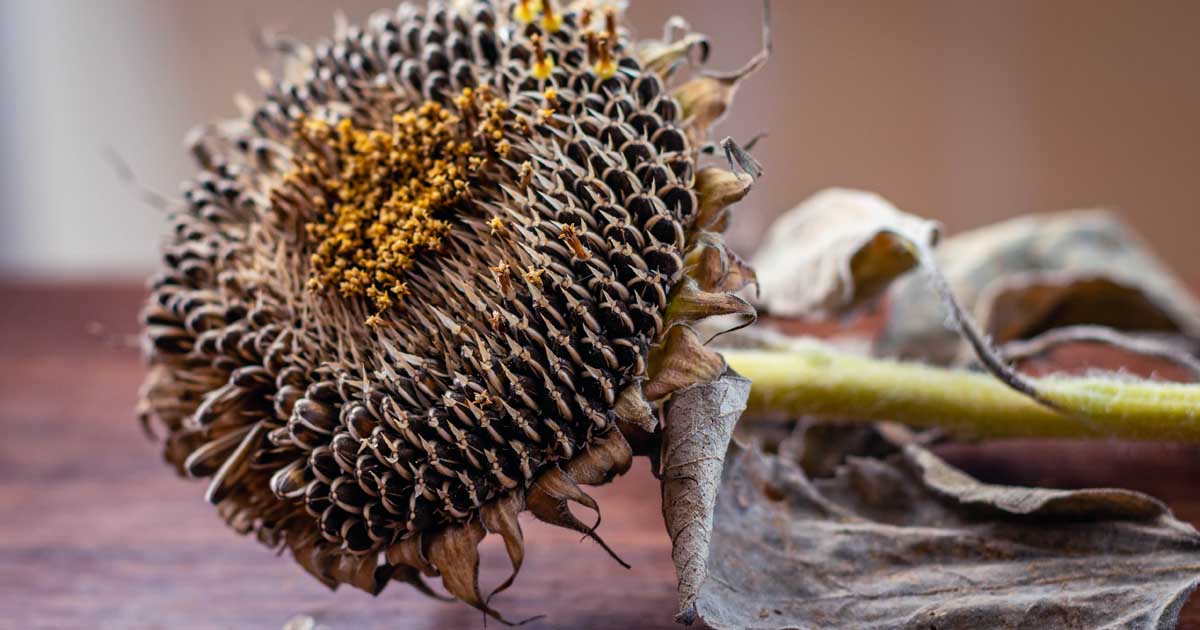Home>Types of Gardening>Ornamental Gardening>How Do Sunflowers Help The Environment


Ornamental Gardening
How Do Sunflowers Help The Environment
Modified: January 22, 2024
Discover how ornamental gardening with sunflowers can positively impact the environment, from attracting beneficial pollinators to providing habitat for wildlife. Explore the benefits today!
(Many of the links in this article redirect to a specific reviewed product. Your purchase of these products through affiliate links helps to generate commission for Chicagolandgardening.com, at no extra cost. Learn more)
Table of Contents
Introduction
Welcome to the world of ornamental gardening, where the art of cultivating beautiful plants merges with the science of environmental sustainability. Ornamental gardening is a passion that brings joy to many, but did you know that it also has a positive impact on the environment? One such plant that exemplifies this symbiotic relationship between beauty and ecology is the sunflower.
Sunflowers (Helianthus) are not only admired for their vibrant colors and towering presence, but they also play a significant role in enhancing the ecological balance of our surroundings. From carbon dioxide absorption to soil improvement, sunflowers offer a multitude of environmental benefits that make them an invaluable addition to any garden or landscape.
In this article, we will explore the various ways in which sunflowers contribute to the environment and how they can be integrated into your ornamental gardening practices. So, let’s dive in and discover the fascinating world of sunflowers and their positive impact on our planet.
Benefits of Sunflowers
Sunflowers offer a wide range of benefits that go beyond their aesthetic appeal. Let’s explore five key ways in which these radiant flowers contribute to the environment.
-
Carbon Dioxide Absorption
Sunflowers are champion carbon dioxide absorbers. Through the process of photosynthesis, they convert carbon dioxide into oxygen, helping to reduce greenhouse gases in the atmosphere. A single mature sunflower can absorb up to 1.4 kilograms of carbon dioxide during its growth cycle, making them an efficient natural air purifier.
-
Soil Improvement
Sunflowers have deep, robust root systems that help improve soil fertility and structure. These extensive root systems penetrate the soil, breaking up compacted layers and enhancing water drainage. Additionally, as sunflowers grow, they release organic matter into the soil, providing essential nutrients that promote overall soil health.
-
Pollinator Attraction
The bright yellow petals of sunflowers act as a magnet for pollinators, such as bees and butterflies. These insects play a crucial role in the pollination of plants, fostering biodiversity and ensuring the reproduction of numerous plant species. By planting sunflowers in your garden, you not only create a visual delight but also support the vital work of these important pollinators.
-
Renewable Energy Source
Sunflowers have gained recognition for their potential as a renewable energy source. The seeds of sunflowers can be pressed to extract their oil, which can then be used as a sustainable biofuel. This biofuel is a cleaner alternative to traditional fossil fuels, reducing greenhouse gas emissions and contributing to a more sustainable energy future.
-
Phytoremediation
Sunflowers possess a unique ability called phytoremediation, which refers to their capacity to absorb and cleanse toxins from the soil. Sunflowers can accumulate heavy metals, such as lead and arsenic, from contaminated soil, making them a valuable tool in environmental cleanup efforts. This process not only helps restore polluted areas but also prevents further contamination of surrounding ecosystems.
As you can see, sunflowers provide numerous environmental benefits that make them indispensable in ornamental gardening. Their contribution as carbon dioxide absorbers, soil improvers, pollinator attractors, renewable energy sources, and phytoremediators showcase their significance in promoting a greener and healthier planet.
Carbon Dioxide Absorption
Sunflowers, with their towering stems and large, vibrant yellow flowers, are not only visually captivating but also play a crucial role in combating climate change. These glorious plants are master carbon dioxide absorbers, inhaling this greenhouse gas and exhaling life-giving oxygen through the process of photosynthesis.
During photosynthesis, sunflowers absorb carbon dioxide from the air and convert it into organic matter, releasing oxygen as a byproduct. This natural process helps to reduce the overall concentration of carbon dioxide in the atmosphere, mitigating the effects of climate change.
One of the extraordinary aspects of sunflowers is their efficiency in carbon dioxide absorption. A single mature sunflower can absorb up to 1.4 kilograms of carbon dioxide during its growth cycle, making them a crucial tool in the fight against global warming.
When sunflowers are planted en masse, their collective impact expands significantly. Sunflower fields, with their vast stretches of golden petals, act as vast carbon sinks, absorbing substantial amounts of carbon dioxide from the atmosphere, thus reducing its concentration.
Furthermore, the carbon storage potential of sunflowers extends beyond their above-ground biomass. Their extensive root systems delve deep into the soil, sequestering carbon underground. These deep roots enhance soil carbon storage, promoting soil health and fertility.
In addition to being impressive carbon dioxide absorbers, sunflowers are also well-suited for areas with high levels of air pollution. They have the ability to absorb pollutants such as nitrogen dioxide, sulfur dioxide, and ozone, effectively purifying the air around them.
The role of sunflowers as carbon dioxide absorbers is not only limited to larger agricultural fields or industrial-scale plantations. Even in smaller ornamental gardens or urban spaces, sunflowers can make a substantial impact on improving air quality and reducing carbon emissions.
By planting sunflowers in your garden, you can actively participate in the reduction of carbon dioxide levels while enjoying their stunning beauty. Whether you have a large outdoor garden or only a small balcony, incorporating sunflowers into your ornamental gardening practices is a simple yet impactful way to contribute to a greener future.
Soil Improvement
Sunflowers are not just beautiful flowers; they are also excellent partners in improving the health and fertility of the soil they grow in. One of the reasons for their effectiveness is their deep, robust root systems, which penetrate the soil and provide numerous benefits.
The extensive root systems of sunflowers help break up compacted soil layers, allowing for better aeration and water infiltration. This helps improve drainage and prevents waterlogging, which can negatively impact plant growth.
As the sunflower roots penetrate the soil, they create channels that facilitate the movement of water, air, and nutrients. This enhanced soil structure promotes healthier root growth not only for sunflowers but also for other plants in the vicinity.
An interesting characteristic of sunflower roots is their ability to excrete organic compounds, such as sugars and amino acids, into the soil. These compounds serve as food sources for beneficial microorganisms, such as bacteria and fungi, promoting diverse soil life and increasing nutrient availability.
Furthermore, sunflowers have a remarkable ability to extract nutrients from the soil, including nitrogen, phosphorus, potassium, and trace minerals. As these nutrients are absorbed and transported through the plants, they are then released back into the soil when the sunflowers naturally decompose. This natural recycling process enriches the soil, providing a nutrient-rich environment for future plant growth.
Another significant advantage of sunflowers in soil improvement is their ability to suppress weeds. The dense growth and shading provided by sunflowers can inhibit the germination and growth of weed seeds, reducing competition for resources and allowing other plants in the area to flourish.
In addition to their beneficial effects on soil structure and nutrient cycling, sunflowers also enhance soil organic matter content. The organic matter, derived from the decomposition of sunflower residues, acts as a natural soil conditioner, helping to retain moisture, improve soil fertility, and support the growth of beneficial soil organisms.
Whether you are cultivating a garden bed, a flower border, or even a container garden, incorporating sunflowers into your gardening practices can greatly contribute to the improvement of soil health. Their deep roots, nutrient extraction abilities, weed suppression qualities, and organic matter contribution make sunflowers invaluable allies in creating fertile and thriving soils.
Pollinator Attraction
When it comes to supporting pollinators and promoting biodiversity in your garden, sunflowers are an exceptional choice. With their bright and cheerful blooms, sunflowers act as beacons, attracting a wide variety of pollinators, including bees, butterflies, and even hummingbirds.
The vibrant yellow petals of sunflowers, arranged in a symmetrical pattern around the central disk, create a visually appealing landing platform for pollinators. Bees and butterflies are naturally drawn to the bright colors and will eagerly visit sunflowers in search of nectar and pollen.
Bees, in particular, are crucial pollinators that play an essential role in transferring pollen from male to female flower parts, enabling plant reproduction. By attracting bees to your garden with sunflowers, you are fostering the pollination of other nearby plants, including fruits, vegetables, and flowering species.
Butterflies are also frequent visitors to sunflowers, sipping nectar from the flowers while inadvertently transferring pollen from one bloom to another. These beautiful insects add a touch of elegance and movement to your garden, enhancing its overall appeal.
In addition to bees and butterflies, sunflowers may attract other pollinators such as hoverflies, beetles, and moths. Each of these pollinators contributes to the intricate ecosystem of your garden, promoting biodiversity and supporting the reproduction of various plant species.
By providing a source of nectar, sunflowers act as vital food resources for pollinators, especially during times when other flowering plants may be scarce. This helps sustain populations of pollinators, ensuring their continued presence in your garden and the surrounding environment.
When planning your garden, consider incorporating different varieties of sunflowers that bloom at various times throughout the growing season. This will provide a continuous and diverse source of nectar for pollinators, attracting them to your garden from early spring until late fall.
Remember, it’s not just the visual appeal of the sunflowers that matters; it’s the role they play in supporting the intricate web of life in your garden. By attracting pollinators, sunflowers contribute to the health and balance of your ecosystem, leading to a more vibrant and thriving environment.
Renewable Energy Source
Sunflowers have not only gained recognition for their beauty and environmental benefits but also for their potential as a renewable energy source. The seeds of sunflowers contain an abundant amount of oil, which can be extracted and used as a sustainable biofuel.
When sunflower seeds are pressed, they yield a high-quality oil that can be refined and used as a substitute for traditional fossil fuels. This oil is commonly referred to as sunflower oil or sunflower seed oil. It is a cleaner and more environmentally friendly alternative to fossil fuels, as it produces lower levels of greenhouse gas emissions when burned.
The use of sunflower oil as a biofuel helps reduce our dependence on non-renewable energy sources such as coal, oil, and natural gas. By utilizing this renewable energy source, we can decrease carbon dioxide emissions and mitigate the harmful impacts of climate change.
In addition to being a sustainable fuel option, sunflower oil can also be used in the production of biodiesel. Biodiesel is a renewable, biodegradable, and non-toxic fuel that can be used in diesel engines without any engine modifications.
The cultivation of sunflowers for biodiesel production offers numerous environmental advantages. Sunflowers have a high oil content, making them a highly efficient source of biodiesel. Moreover, they can be grown on marginal lands that are not suitable for food crops, minimizing competition for food production.
Furthermore, the by-products of sunflower oil extraction can be used as animal feed, creating a sustainable and circular approach to agriculture. The leftover meal from the oil extraction process is rich in protein, making it a valuable ingredient in livestock feed and reducing the need for synthetic additives.
As the demand for renewable energy continues to rise, sunflowers present a promising solution. Their ability to produce oil-rich seeds suitable for biofuel production, along with their versatility in growing conditions, make them a viable and sustainable source of energy.
By supporting the cultivation and utilization of sunflowers as a renewable energy source, we can contribute to a greener and more sustainable future. Whether it’s large-scale agricultural production or small-scale homegrown biofuel projects, sunflowers offer a promising avenue for reducing carbon emissions and promoting a cleaner energy transition.
Phytoremediation
Sunflowers have a unique and remarkable ability called phytoremediation, which refers to their capacity to absorb and detoxify contaminants from the soil. This makes them invaluable in environmental cleanup efforts, particularly in areas affected by soil pollution.
Contaminants such as heavy metals, including lead, arsenic, zinc, and cadmium, can accumulate in soil due to industrial activities, mining, or improper waste disposal. These pollutants pose a threat to both human health and the environment, as they can leach into groundwater or be taken up by plants and enter the food chain.
Sunflowers are known for their ability to absorb and accumulate heavy metals in their tissues, particularly in their roots and stems. As sunflowers grow, they draw these contaminants from the soil, effectively reducing their concentration and helping to detoxify the polluted area.
This phytoremediation process works by sunflowers taking up the contaminants through their roots and storing them in their tissues. As the contaminated parts of the sunflowers are removed, the pollutants are also removed from the soil, reducing the overall contamination level.
Once the sunflowers have completed their growth cycle, they can be harvested and disposed of properly to prevent recontamination. This method of using sunflowers to absorb and remove heavy metals from the soil is cost-effective and environmentally friendly compared to traditional remediation methods.
Phytoremediation with sunflowers is particularly effective for moderately contaminated soils. The deep and extensive root systems of sunflowers enable them to reach pollutants buried deep in the ground, resulting in more thorough remediation.
In addition to heavy metals, sunflowers can also be used for the remediation of organic contaminants, such as hydrocarbons and pesticides, through a process called rhizodegradation. Sunflower roots release enzymes and organic compounds that stimulate the growth of beneficial soil microorganisms capable of breaking down these organic pollutants.
By employing sunflowers in phytoremediation projects, we can rehabilitate contaminated sites and restore their ecological balance. This process not only eliminates or reduces the harmful effects of pollutants on the environment but also prevents further spreading of contaminants to surrounding areas.
Furthermore, phytoremediation with sunflowers offers a more sustainable and aesthetically pleasing alternative to traditional remediation methods like excavation and chemical treatments. The bright and vibrant blooms of sunflowers create a visually stunning landscape while actively contributing to environmental cleanup.
Incorporating sunflowers into pollutant-affected areas or using them as part of a remediation strategy showcases their potential in addressing environmental challenges and creating a healthier, cleaner, and more sustainable world.
Conclusion
Sunflowers are not just a delightful addition to your garden; they are powerful allies in promoting a greener and more sustainable environment. Their extraordinary attributes and ecological benefits make them invaluable in ornamental gardening and beyond.
From their role in carbon dioxide absorption, improving soil health, attracting pollinators, serving as a renewable energy source, to their efficiency in phytoremediation, sunflowers offer a multitude of environmental advantages.
By planting sunflowers, you can actively contribute to reducing carbon dioxide levels, enhancing soil fertility, supporting pollinators, promoting renewable energy, and cleaning up contaminated areas. Sunflowers act as beacons of hope, demonstrating that beauty and sustainability can coexist harmoniously.
Whether you have a sprawling garden or a small balcony, incorporating sunflowers into your ornamental gardening practices is a simple yet impactful way to make a difference. Embrace the vibrant colors, the towering stature, and the positivity that sunflowers radiate.
So, let your love for ornamental gardening and your commitment to the environment converge in the blossoms of sunflowers. Explore the world of sunflowers, and discover the countless ways in which they can enhance your garden, support ecosystems, and contribute to a flourishing planet.
Plant sunflowers, nurture their growth, and witness the transformation they bring to your garden and the environment. Let these radiant flowers be a symbol of your commitment to a sustainable future, where beauty and ecological responsibility unite.

